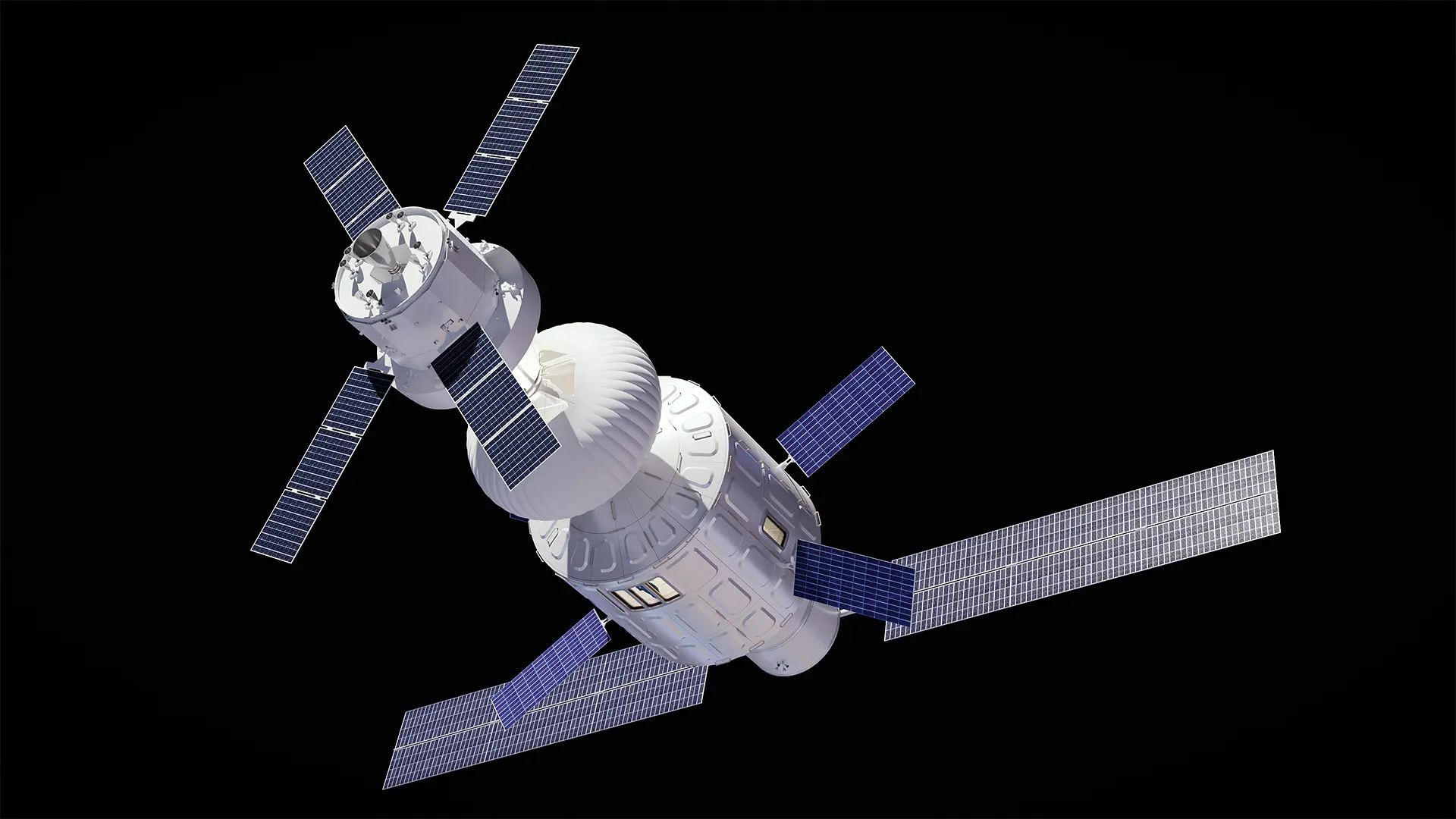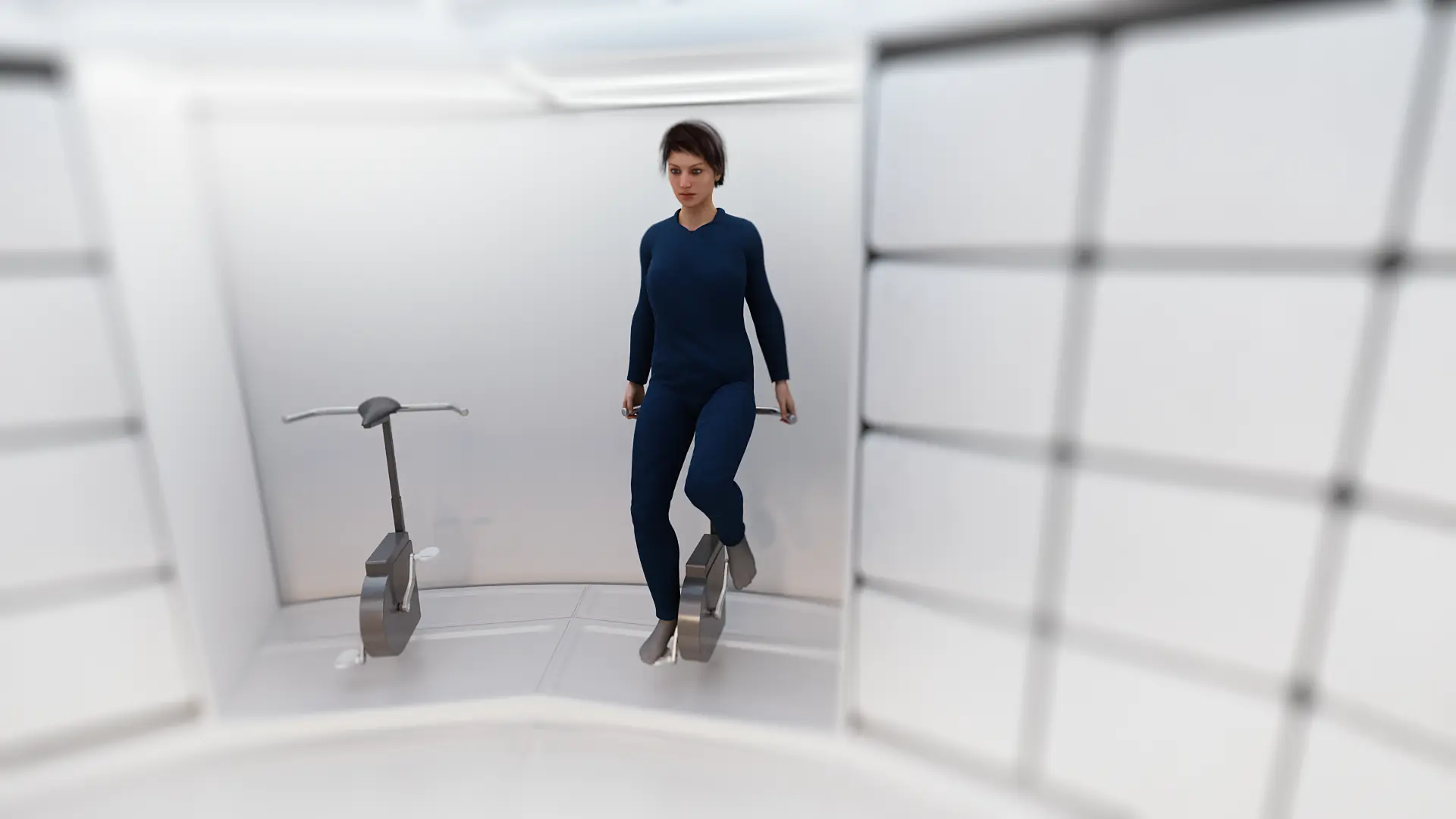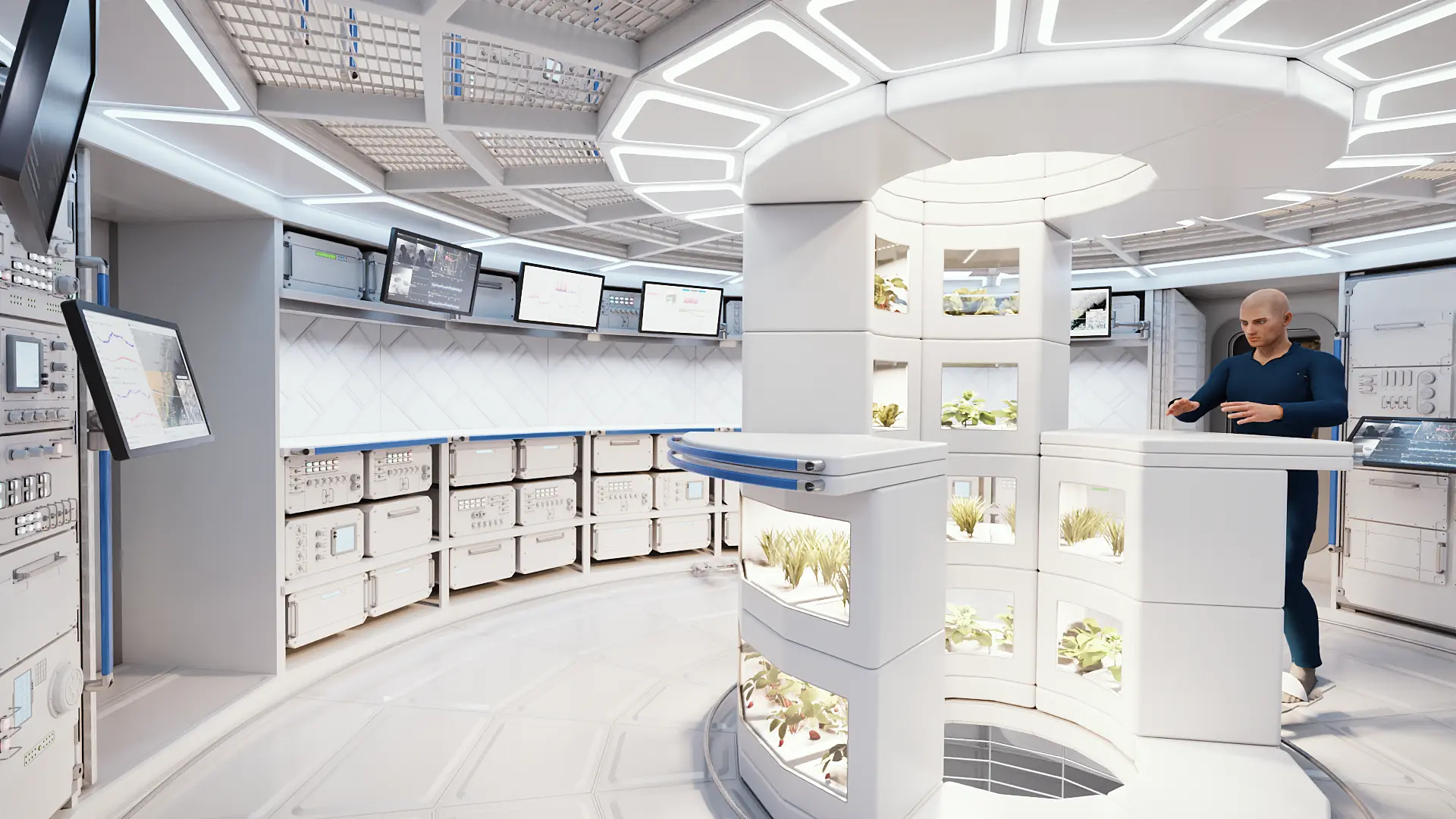
Airbus LOOP - Multi-purpose orbital module unveiled
Published on Wed, 19.04.2023 – 08:50 CEST in , covering Airbus Defence & SpaceThe Space Symposium was held in Colorado Springs (USA) from April 17 to 20. During the "must-attend" event for the international space industry, Airbus Defence & Space presented LOOP, its design for a new orbital module that can also be used to form its own space station. As the designs show, the next generations of human outposts in space could well be comfortable.
The age of space stations began in 1971. To date, 14 space stations have been launched, and there are currently two outposts in low Earth orbit: the International Space Station (ISS) and the Chinese Space Station. However, the ISS in particular is getting on in years and has already exceeded its originally planned lifetime (until 2020). Nevertheless, the countries involved in its operation have agreed to continue until 2030, when it will be shut down for good and the 440-tonne cargo will be deorbited. With Starlab (Airbus, Nanoracks, Voyager Space, Lockheed Martin among others), Orbital Reef (Blue Origin, Sierra Space, Boeing, Redwire Space, Genesis Engineering Solutions, Arizona State University) and the Axiom Station (Axiom Space) there are already ideas for successors. Now, Airbus Defence & Space has unveiled its own design for an orbital module, LOOP, designed for long-term missions.
Modular design for larger space stations
According to the company, LOOP has a modular design and can be adapted to individual customer requirements. With a diameter of 8 meters (ISS approx. 4.5 m) and a similar length, LOOP is intended to make a stay in space significantly more comfortable than before. The outer shell is estimated to be 20 centimeters thick to provide sufficient protection against micrometeorites and space debris. This is followed by two one-meter rings for equipment (outer and inner ring) and a tunnel with a diameter of 1.8 meters. The tunnel will allow astronauts to move between the three decks. Despite its immense size, LOOP should be able to be launched into orbit in one piece and be ready for use immediately upon arrival.

© Airbus Defence & Space
Designed for heavy lift rockets of a new generation
It will probably be some time before this actually happens. This is because the heavy-lift rockets needed to carry such large payloads are still lacking. ESA's Ariane 6, which is still under development, will probably not be able to do the job. After all, it has a diameter of only 5.4 meters, which even with an enlarged payload fairing will hardly be able to be brought up to 8 meters. With a diameter of 9 meters, SpaceX's Starship would be a candidate, but this launcher is still under development. Airbus Defence & Space is also aware that LOOP will require different launch capabilities than those currently available. The company also notes that the Orbital Module is only designed for the next generation of super-heavy launch vehicles.
Kompatibilität integriert
Laut derzeitigem Konzeptstand ist LOOP für eine Besatzung von 4 Astronaut:innen ausgelegt. Vorübergehend, zum Beispiel beim Wechsel der Crew, sollen aber bis zu acht Personen Platz finden. Wie die Renderings zeigen, stehen gleich drei unterschiedliche Decks zur Verfügung. In der Standard-Konfiguration ist das oberste als Wohneinheit gedacht, auf Ebene 2 befindet sich der Forschungsbereich. Deck 3 hingegen ist eine große Zentrifuge, mit der künstliche Schwerkraft erzeugt werden kann. Damit soll die Belastung der Schwerelosigkeit für den menschlichen Körper verringert werden. Rund um den Verbindungstunnel ist über die Decks ein Gewächshaus angeordnet. So müssten die künftigen Raumfahrer:innen auch nicht auf frisches Obst und Gemüse verzichten. Damit im Falle eines Schädlingsbefalls nicht die gesamte Ernte verloren ist, sind die einzelnen Segmente voneinander getrennt.
Dem Zeitgeist entsprechend verzichtet Airbus auf proprietäre Dockingsysteme. So soll LOOP mit allen heutigen und zukünftigen Besatzungs- und Frachtfahrzeugen kompatibel sein. Diesen Ansatz verfolgt unter anderem auch The Exploration Company mit ihrem Raumschiff Nyx, für das sich das Unternehmen Anfang des Jahres die Rekordsumme von 40,5 Mio. Euro Finanzierung sichern konnte.

© Airbus Defence & Space
Eines der veröffentlichten Bilder zeigt eine mögliche Konfiguration, wie sie später im All stattfinden könnte. So ist an LOOP ein aufblasbares Modul von Spartan Space angebracht. Daran wiederum befindet sich ein Raumschiff, das stark dem Raumschiff Orion ähnelt. Diese Ähnlichkeit ist sicher kein Zufall, immerhin zeichnet Airbus Defence & Space für das zugehörige ESM (European Service Module) verantwortlich. Zudem besteht die Möglichkeit, mehrere Orbital-Module miteinander zu einer großen Raumstation zu verbinden.
LOOP ist mehr Science und weniger Fiction
Der Bezeichnung Mehrzweck-Orbitalmodul trägt das Konzept auch durch seine Einsatzorte Rechnung. Laut Unternehmensangaben soll es nicht nur im erdnahen Orbit einsetzbar sein, sondern auch in einer Umlaufbahn um den Mond. Und selbst für die Reise zum Mars könnte es geeignet sein. Bis eine Crew sich jedoch auf den Weg zu unserem Nachbarplaneten macht und in LOOP entspannte Tage verbringt, werden noch Jahre vergehen. Letztlich zeigt dieses Konzept aber vor allem, dass die Raumfahrt der Zukunft immer näher an die kühnen Ideen von Science Fiction rückt. Wie es scheint, ist im 21. Jahrhundert alles möglich. Vor allem in der modernen, privaten Raumfahrt.

© Airbus Defence & Space

© Airbus Defence & Space

© Airbus Defence & Space

© Airbus Defence & Space

© Airbus Defence & Space
Past and present space stations
| # | Name | Start | Crash | Crewed days |
|---|---|---|---|---|
| 1 | Saljut 1 (USSR) | 19.04.1971 | 11.10.1971 | 24 |
| 2 | Saljut 2 (USSR) | 03.04.1973 | 28.05.1973 | 0 |
| 3 | Kosmos 557 (USSR) | 11.05.1973 | 22.05.1973 | 0 |
| 4 | Skylab (USA) | 14.05.1973 | 11.07.1979 | 171 |
| 5 | Saljut 3 (USSR) | 24.06.1974 | 24.01.1975 | 15 |
| 6 | Saljut 4 (USSR) | 26.12.1974 | 02.02.1977 | 92 |
| 7 | Saljut 5 (USSR) | 22.06.1976 | 08.08.1977 | 67 |
| 8 | Saljut 6 (USSR) | 29.09.1977 | 29.07.1982 | 683 |
| 9 | Saljut 7 (USSR) | 12.04.1982 | 07.02.1991 | 816 |
| 10 | Mir (USSR) | 19.02.1986 | 23.03.2001 | 4594 |
| 11 | ISS (International Cooperation) | 20.11.1998 | in orbit | 8203* |
| 12 | Tiangong 1 (China) | 29.09.2011 | 02.04.2018 | 21 |
| 13 | Tiangong 2 (China) | 15.09.2016 | 19.07.2019 | 30 |
| 14 | Chinese Space Station (China) | 29.04.2021 | in orbit | 590* |





